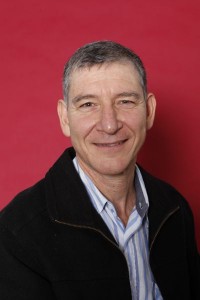By Tony Rinaudo
Tony Rinaudo has recently traveled to Haiti to gain a first-hand experience of the status of the forests in the Caribbean island. He has noted down the distinctive characteristics of the land and has evaluated the way it is currently used. He has collected images and highlighted existing good practices. The result is a technical report that explores the current conditions of Haiti’s landscape, including useful comments and recommendations that may open the eyes and revive the hope for a better future. This is the introduction to the report.
« In overthrowing me you have cut down in Saint Domingue only the trunk of the tree of liberty; it will spring up again from the roots, for they are many and they are deep » - Général Toussaint Louverture, (1802)
General Toussaint Louverture was the leader of the Haitian Revolution. His military genius and political acumen transformed an entire society of slaves into the independent black state of Haiti. The success of the Haitian Revolution shook the institution of slavery throughout the New World.
When the French imprisoned him he famously referred to the Haitian fight for independence with a metaphor, pointing to the tree of liberty’s ability to spring up again from its roots after being cut down. Given his understanding of the tenacity of trees to grow from stumps, one wonders if the history of Haiti’s forests would have been different had the French left him in power.
General Louverture knew the key principle that Farmer Managed Natural Regeneration is based on in 1802! Could this knowledge be revived and applied for creating a Haitian Regreening movement today?
Before leaving for my trip to Haiti last November, people around me would give me an incredulous look and say “Well, that’s a challenge!” – I was not sure what to expect.
As I started to read background material and receive information from people who worked in the field, I could identify two streams of thought and experience.
The one says that reforestation in Haiti has failed. That over $100m has been spent on reforestation and there is little to show for it; that Haiti is one of the most deforested countries in the world with one of the highest deforestation rates. By the end of the 1980’s, the level of nursery based tree production was around 10 million trees per year, but with a survival rate of between 30-40%. Top down methods were often used along with incentives, paying farmers with ‘Food for Work’ programs. Too rarely were farmers listened to, or their traditional knowledge acknowledged and built on, or their actual needs and decision making-drivers understood. Severe storms, conflict, dependence on charcoal, population pressure to clear more land and higher returns for annual crops have contributed to the current state of deforestation.
The other points to pockets of success where farmers have embraced the practice of agroforestry where planting and leaving trees on their farmland makes sense to them – usually economic, but also for soil conservation and other reasons. Where tree species such as mango, cocoa, coconut, citrus, tamarind, avocado provided a clear economic advantage, and in some cases where planting trees for soil conservation purposes made economic sense, the work prospered.
However, after few days spent on the island, having met local farmers and having presented Farmer Managed Natural Regeneration in a workshop I feel very encouraged. Throughout Haiti there are millions of tree stumps, roots and seeds in the soil with great capacity to regenerate. Through awareness building and creating an enabling environment, rapid, low cost and scalable reforestation is possible in Haiti. I have no doubt about the ability of World Vision Haiti staff to implement good Natural Resources Management projects or of the Haitian people to own and continue the work beyond the life of the project. I felt the participants to the FMNR workshop remained very engaged until the end. For me, this trip was a good investment and I believe it will bear fruit. So I am leaving with great hope to see a re-greening movement in Haiti which will transform the island and which will be an inspiration to the whole region.
Download the Haiti Technical Notes full report

Tony Rinaudo is Natural Resources Research and Development Advisor for the Food Security and Climate Change team at World Vision Australia.
Related Pages:
Farmer Managed Natural Regeneration
